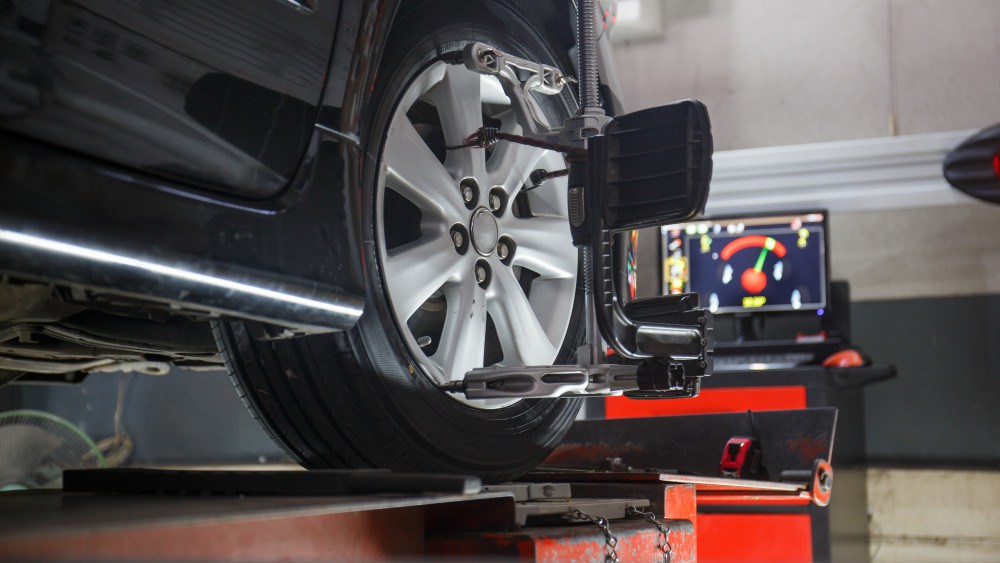 Wheel alignment, even referred to as tracking or breaking, is a part of vehicle maintenance. It consists adjusting wheels’ angles so that they’re set to the specification of the car manufacturer. The reason why it needs to be adjusted include reducing the tire wear and enduring that the vehicle is running straight & true without pulling to any one side. The alignment angles may be altered beyond the specifications of the manufacturer for obtaining a particular handling characteristic. Off-road applications and motorsport can call for different angles that need to be adjusted beyond normal for various reasons.
Wheel alignment, even referred to as tracking or breaking, is a part of vehicle maintenance. It consists adjusting wheels’ angles so that they’re set to the specification of the car manufacturer. The reason why it needs to be adjusted include reducing the tire wear and enduring that the vehicle is running straight & true without pulling to any one side. The alignment angles may be altered beyond the specifications of the manufacturer for obtaining a particular handling characteristic. Off-road applications and motorsport can call for different angles that need to be adjusted beyond normal for various reasons.
No matter what make or model the vehicle is, all kinds of new vehicles leave factory with alignment checked as well as adjusted. Vehicle owners are advised to to alignment of their cars after first 5000 km. Failure in doing this can result in camber & toe specifications drifting outside the limit of the manufacturer. This can lead to tire wear and vehicle pulling.
At first, consumers may not be able to notice all these defects. However, after running a few kilometers or using for a few days, an uneven tire wear and a drift/pulling to the right or left is what may be caused. Tire wear may lead to frequent replacement of the tires thereby adding to the running cost for consumer. Sometimes vehicle pulling also cause irritation or/and fatigue when driving the vehicle.
Under normal driving conditions, a lot of vehicles will be able to go 50000 km before needing a set of new tires. For reaching that mileage, the wheel alignment should be checked every ten 10000 km. A severe driving incident or any changed suspension component should also warrant a check.

Wheel alignment on a sedan takes an hour under the best possible conditions. A performance or utility vehicle can need more labor. When hardware and fasteners are seized/rusted, extra time can be needed or/and parts might require to be replaced.
Ride quality, breaking distance and also fuel economy are all that are affected by correct inflation & rotation of the tires. If your car squeals when tuning corners on the dry pavement, it’s possibly time to get your alignment checked. Changing the tires and rims usually doesn’t affect the alignment but the secondary angles.
While alignment must always be checked whenever there is an installation of a new tire or suspension component or when a vehicle has undergone a major road hazard or curb or if at any time an unusual tire wear patterns are seen.